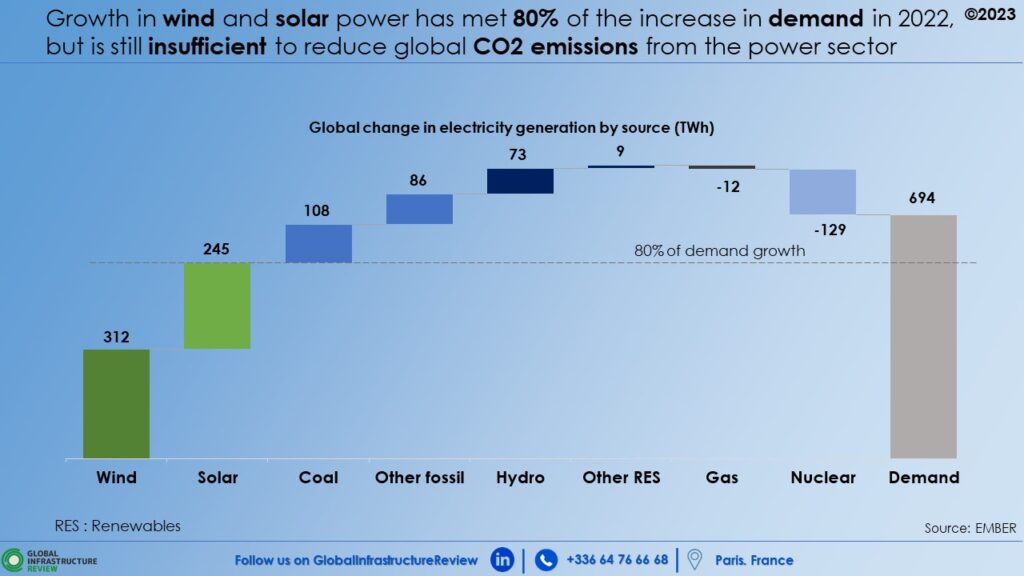The Global Energy Think Tank Ember has recently produced its fourth annual report on the changes in electricity generation in 2022.
Several observations can be drawn from this report. Below is a non-exhaustive 10-point summary of the main changes observed:
1- Electricity demand has increased by 2.5% (+694 TWh) in 2022. 3 countries account for 93% of this increase (China: 54%; US: 21%; India: 18%)
2- In 2022, the world experienced a new record in global electricity demand (28,510 TWh) of which 3 countries accounted for 52% of the demand China (31%), UnitedStates (15%), India (6%)
3- The global electricity generation mix in 2022 was made of 61% fossil fuels (coal: 36%, gas: 22%), hydro (15%), nuclear (9%), wind (7.6 %), solar (4.5%) and bioenergy (2.4%).
4- 12% of global electricity in 2022 was supplied by solar and wind, a first ever (8% in 2020 and 10% in 2021). Solar and Wind are already changing the global electricity supply at astounding speed.
5- 80% of the world’s increase need for electricity was supported by solar and wind (+245 TWh for solar and +312 TWh for wind). The percentage rises to 92% if all renewable sources are considered.
6- Clean electricity from sources such as Wind, Solar, Nuclear, bioenergy, Hydroelectricity accounted for almost 40% of the electricity generation in 2022.
7- With an emission intensity of 436 gCo2/kWh, 2022 has been a cleanest year ever helped by the strong growth of solar and wind.
8- Power generation from fossil fuels increased by 183 TWh resulting in an increase in CO2emissions from the power sector of 160 million tonnes (+1.3%)
9- Coal-fired power generation increased by 1.1%. This increase is relatively small compared to expectations, as the year 2022 was marked by the Ukrainian crisis and high world gas prices.
10- China, the US and India continue to dominate the ranking of countries with the highest emissions from the power sector.

As a final remark, although a good progression of renewable energies (wind & solar) has been observed in the power generation, it should be stressed that the increase in the world’s electricity needs has not been entirely absorbed by clean energy.
The outlook is very satisfactory as 2023 could be the year in which CO2 emissions in the power sector start to decline.
It is important to underline that all countries are involved in this dynamic observed in the energy transition. As I have been interested in understanding country initiatives to achieve sdg7 in Africa, it is interesting to highlight the acute interest of African countries to diversify their power mix integrating more and more green energies.